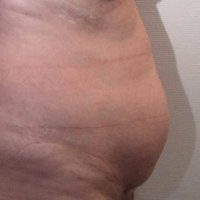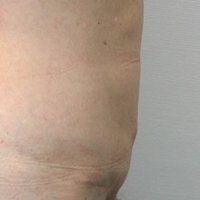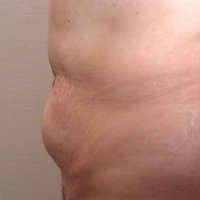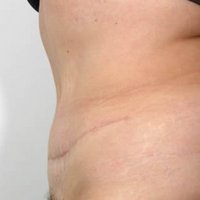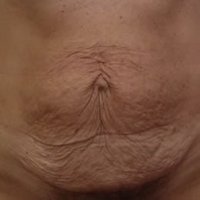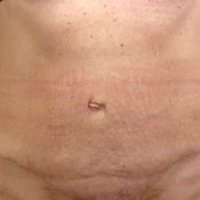Tummy Tuck (Abdominoplasty) (often combined with liposuction)
A tummy tuck removes excess fat and skin, and in most cases restores weakened or separated muscles creating an abdominal profile that is smoother and firmer.
If the abdominal wall loosens after a pregnancy or following a weight gain, the patient will not recover his/her original appearance. As a result of this substantial stretching and straining, diet or physical activity will only achieve a slight improvement.
In these cases an abdominoplasty will bring long lasting, effective improvements.
Abdominoplasty is a common surgery. However it is not recommended for people who are overweight. A patient’s weight must be stable and under control.
An important factor is the position of belly fat, and whether it is situated under the skin, or in the belly itself (in the area of the viscera).
Criteria under which medical assurance will cover costs
Medical assurance participates only in the presence of a significant pathology. The patient must be examined by a doctor representing the medical insurance company before surgery is permitted. It will also be discussed during the personal consultation with the surgeon.
Operation Techniques
There are several techniques for an abdominoplasty. The most common technique is a total abdominoplasty under general anaesthetic or under spinal anaesthetic (legs and stomach). An abdominoplasty is often combined with liposuction. The incision is made slightly over the pubis and follows down the two sides of the bikini line, then the skin is detached from the muscles as far as the lower side of the ribs after releasing the navel. The excess skin and fat are removed. A muscle plasty is performed at that point of the surgery, if necessary. Then the skin is closed whilst taking care where the navel goes. If the excess skin is only beneath the navel, the surgeon practices a partial abdominoplasty (mini-abdominoplasty) without moving the navel.
Length of Surgery
A abdominoplasty takes about two-and-a-half to three hours. A mini-abdominoplasty lasts about one-and-a-half to two hours.
Inpatient or Outpatient
A small abdominoplasty can be performed on an outpatient basis, but for major surgery a two to four day hospital stay is necessary.
After the surgery
Immediately after the surgery the patient gets an elastic panty and a drain, which will be removed after two to three days.
The patient should allow a period of one to six weeks for recovery, depending on the operation, and a similar absence from work.
Risks
Every operation exposes patients to some risks as haemorrhages and infections. Serious postoperative complications are rare after a abdominoplasty. Theses risks are increased for smokers who are also overweight. Thrombosis and pulmonary embolism are rare, but slightly more frequent than for other types of plastic surgeries.
The skin can show some necrosis (local troubles of blood circulation), which can generate a delay in the recovery or a need of a second surgery. Scars can develop an enlargement (hypertrophy) (keloid).
There is often a loss of sensitivity underneath the navel which may not return to normal.
Problems for recovery and skin necrosis are frequent in:
- Smokers
- Diabetics
- Arterial hypertension
- Excessively overweight
